Fresh from the printer
The most recent publications from the department
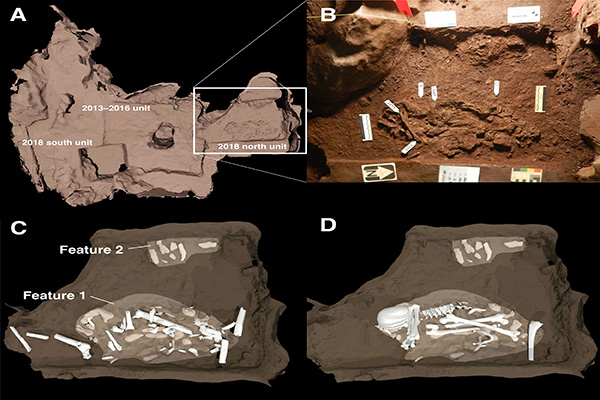
Recent excavations in the Rising Star Cave System of South Africa have revealed burials of the extinct hominin species Homo naledi. A combination of geological and anatomical evidence shows that hominins dug holes that disrupted the subsurface stratigraphy and interred the remains of H. naledi individuals, resulting in at least two discrete features within the Dinaledi Chamber and the Hill Antechamber. These are the most ancient interments yet recorded in the hominin record, earlier than evidence of Homo sapiens interments by at least 100,000 years. These interments along with other evidence suggest that diverse mortuary practices may have been conducted by H. naledi within the cave system. These discoveries show that mortuary practices were not limited to H. sapiens or other hominins with large brain sizes.
Berger, L. R., Makhubela, T., Molopyane, K., Krüger, A., Randolph-Quinney, P., Elliott, M., ... & Hawks, J. 2023. Evidence for deliberate burial of the dead by Homo naledi. bioRxiv. doi: https://doi.org/10.1101/2023.06.01.543127
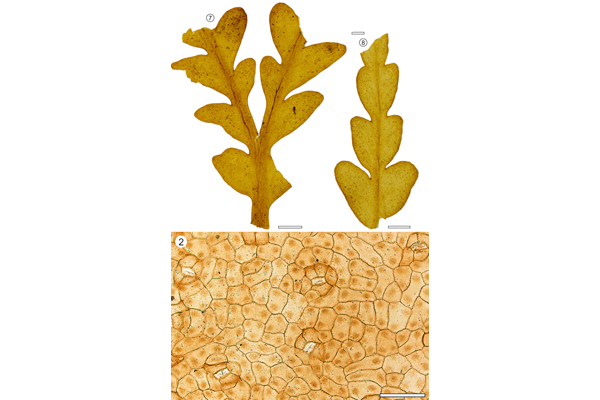
A new study provides the first comprehensive description of Dicroidium leaves and reproductive organs (Umkomasia, Fanerotheca and Pteruchus) from the Upper Triassic (c. 220 million-year-old) Leigh Creek Coal Measures of South Australia. Seven forms of Dicroidium are described and their diagnostic epidermal and cuticular features are illustrated for improved differentiation of species. Feeding damage and resin bodies within the plant remains indicate that Dicroidium (the dominant plant in the Southern Hemisphere during the Triassic) was a prominent target for insect herbivores and that the plant had developed resinous defences to heal wounds. The study has improved our understanding of biological linkages between fossil plant organs and helps to refine reconstructions of the middle- to high-latitude Dicroidium-dominated forest ecosystems in the Late Triassic greenhouse world.
Unverfärth, J., McLoughlin, S. & Bomfleur, B., 2022. Mummified Dicroidium (Umkomasiales) leaves and reproductive organs from the Upper Triassic of South Australia. Palaeontographica Abt B 304, 149–225. DOI: 10.1127/palb/2022/0079
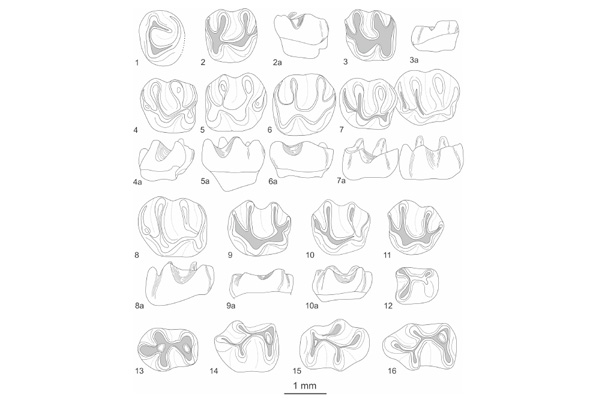
Gundis or comb rats (family Ctenodactylidae) are small, stocky rodents that originated in Central Asia during the Paleogene. Gundis experienced rapid adaptive radiation throughout the Oligocene, then most species went extinct before middle Miocene, except for the subfamily Ctenodactylinae, which survived and reached the greatest diversification during the Miocene; today, only five species representing four gundi genera are restricted to North and West Africa. Here, we present 30 myr old fossil teeth from the early Oligocene Nanpoping fauna (Xianshuihe Formation) from the Lanzhou Basin in Central China. Nine species representing the genera Tataromys, Yindirtemys, Alashania, Karakoromys, ?Euryodontomys and Helanshania were recognized, five species for the first time in the Nanpoping fauna. In the Lanzhou Basin, gundis show the maximum richness in the early Oligocene until the abrupt decline at the late Oligocene, with only Yindirtemys left. Ctenodactylid diversification in the early Oligocene may be related to the semi-arid climate with episodes of higher precipitation, and the following niche partitioning.
Li, Z., Mörs, T., Zhang,Y., Xie, K. & Li, Y. 2023. Ctenodactylid rodents (Rodentia, Ctenodactylidae) from the early Oligocene Nanpoping fauna of Lanzhou Basin, Northwest China. Palaeontographica A 326 (1-6): 151-182. https://dx.doi.org/10.1127/pala/2023/0139
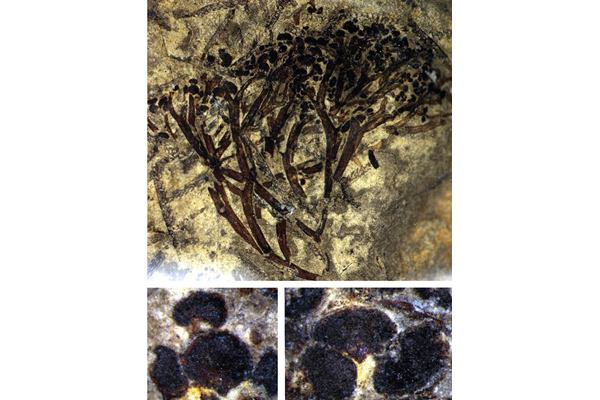
Cooksonia bohemica from upper Silurian strata of the Czech Republic is one of the most complete early land plants known. It has equally branching stems, consistent shortening of segments towards the branch tips, and terminal kidney-shaped sporangia that produced spores of Ambitisporites type. The branches contain tubular structures interpreted to be true conducting tissues. A survey of early land plants suggests a general radiation of cooksonioids away from a core region around the Rheic Ocean during the Silurian–Devonian transition.
Libertín, M., Kvaček, J., Bek, J. & McLoughlin, S., 2022. The early land plant Cooksonia bohemica from the Přídolí, late Silurian, Barrandian area, Czech Republic, Central Europe. Historical Biology https://doi.org/10.1080/08912963.2022.2144286
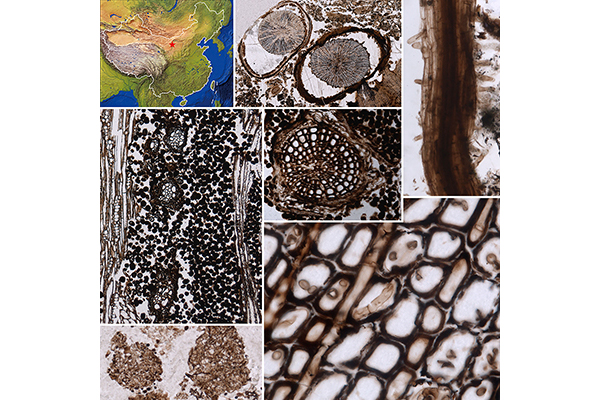
Nurse logs are common in modern forests from boreal to temperate and tropical ecosystems but the evolution of the nurse-log strategy remains elusive because fossil evidence is rare. We identified seven coniferous nurse logs from Permian strata of northern China that were colonized by conifer and sphenophyllalean roots. These roots are associated with two types of arthropod coprolites and fungal remains. Our study provides the first glimpse into plant—plant facilitative relationships between late Paleozoic gymnosperms and sphenopsids. Detritivorous arthropods and fungi appear to have been crucial for the utilization of nurse logs in Permian forests. The nurse-log regenerative strategy appears to have been adopted by various plant groups through time, leading to its wide representation in modern forests.
Feng, Z., Gou, X.-D., McLoughlin, S., Wei, H.-B. & Guo, Y., 2022. Nurse logs: A common seedling strategy in the Permian Cathaysia Flora. iScience 25:105433. DOI: https://doi.org/10.1016/j.isci.2022.105433
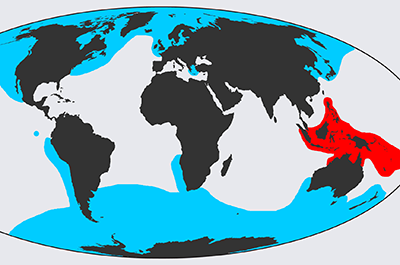
In this study we hypothesize that the Cenozoic spread of pinnipeds drove nautiloids into their present-day central Indo-West Pacific refuge.
Kiel, S., Goedert, J.L., and Tsai, C.-H. 2022. Seals, whales and the Cenozoic decline of nautiloid cephalopods. Journal of Biogeography 49: 1903-1910. https://doi.org/10.1111/jbi.14488
Another link about the paper:
https://journalofbiogeographynews.org/2022/10/15/how-seals-made-nautilus-a-living-fossil/
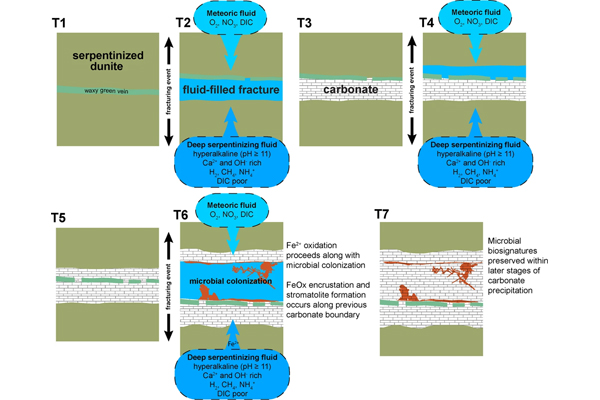
Although serpentinite systems are known to host active microbial life, it is unclear to what extent fossil evidence of these communities may be preserved over time. In this study, we report the detection of biosignatures preserved in a mineralized fracture within drill cores from the Samail Ophiolite in Oman. Two varieties of filamentous structures were identified in association with iron oxide precipitates. Additionally, laminated structures composed of carbon and nitrogen rich material were identified and interpreted as having a microbially-associated origin. Our observations confirm subsurface microbial communities within serpentinizing environments and highlight a unique taphonomic window to preserve evidence of rock-hosted life.
Lima-Zaloumis, J., Neubeck, A., Ivarsson, M., Bose, M., Greenberger, R., Templeton, A.S., Czaja, A.D., Kelemen, P.B., Edvinsson, T. 2022. Microbial biosignature preservation in carbonated serpentine from the Samail Ophiolite, Oman. Nature Communications Earth & Environment 3, 231, https://doi.org/10.1038/s43247-022-00551-1
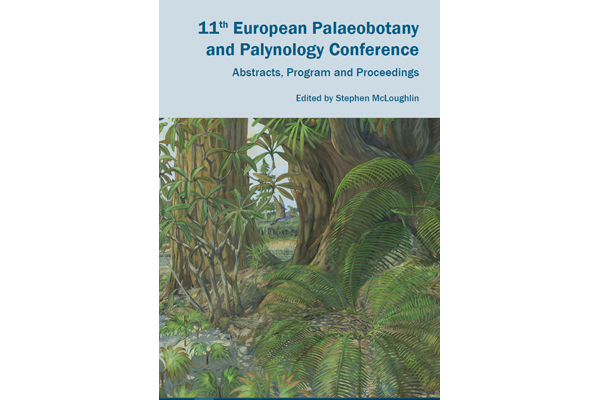
The 11th European Palaeobotany and Palynology Conference was held in Stockholm, on the 19th–22nd of June, 2022. The conference was hosted jointly by the Swedish Museum of Natural History and Stockholm University. The conference attracted around 240 delegates who presented around 180 scientific talks and about 70 posters. In addition, the conference hosted two professional workshops: (1) Workshop on Fossil Nomenclature; and (2) Workshop on European Training Network Grant Application PALEOPROXIES. The conference also incorporated fieldtrips to (1) the Viking archaeological site of Birka; (2) Carl Linneus’ hometown of Uppsala; (3) the Palaeozoic and Mesozoic stratigraphic successions of Skåne; and (4) the Ryggmossen mire system north of Uppsala. The full Abstracts, Program and Proceedings volume for the conference can be downloaded here .
.
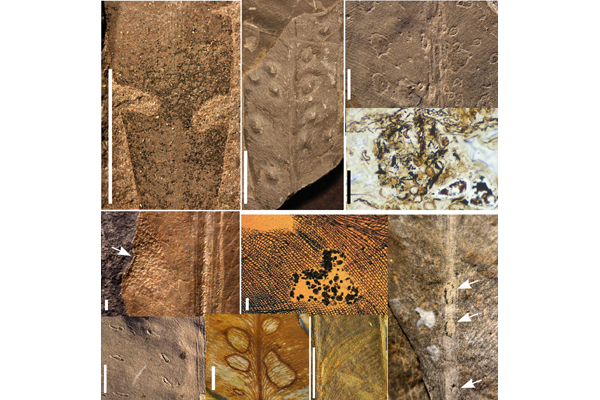
We carried out an extensive survey of literature and museum specimens of Permian plant fossils from the ancient supercontinent Gondwana and found over 400 discrete associations of arthropod-plant interactions. The interactions occur in all regions of the supercontinent from the Asselian (298 Myrs) to latest Changhsingian (252 Myrs). Margin- and apex-feeding damage is the most common style of herbivory but hole- and surface-feeding, galling, and oviposition (egg-laying) damage are locally well represented. Evidence for skeletonization and mucivory (piercing-and-sucking damage) is sparse and that for leaf mining is equivocal. Wood and root boring is recognized widely but only where depositional conditions were conducive to the permineralization of plant axes. Wood boring and detritivory may have been especially favoured arthropod feeding strategies in Permian high latitudes where living foliage was scarce during the polar winters. Herbivory damage is most strongly apparent on the leaves and wood of glossopterid gymnosperms; other groups of broad-leafed seed plants and sphenopsids host moderate levels of damage. Damage features are sparse on lycophytes, ferns and spine- and scale-leafed conifers. A survey of insect body fossils from the Gondwanan Permian reveals a broad array of taxonomic groups with diverse feeding strategies, but these are known primarily from a very small number of rich assemblages that might not have been representative of the insect fauna in general. Oribatid mites and collembolans appear to have been important components of the wood-boring and detritivorous communities. The Permian potentially provides important lessons for the present as it spanned a shift from icehouse to hothouse conditions and ended in Earth’s greatest mass extinction event. Although trends in herbivory styles and diversity through time are difficult to resolve from the mostly incidental observations and illustrations of plant damage across Gondwana, the results of this study provide a baseline of qualitative data for future studies that should adopt a quantitative approach to the analysis of herbivory.
McLoughlin, S., Prevec, R. & Slater, B.J., 2021. Arthropod interactions with the Permian Glossopteris flora. Journal of Palaeosciences 70, 43–133.
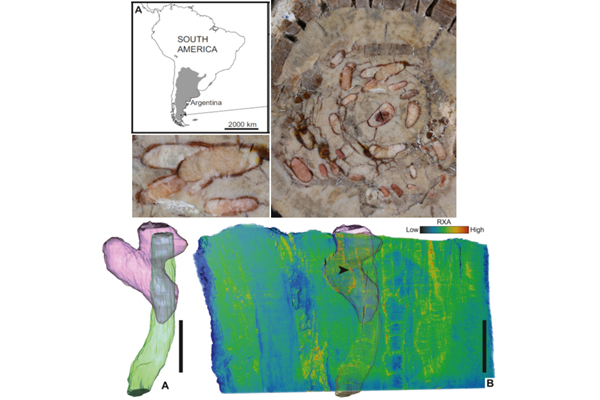
Frass-filled insect borings were found in petrified wood of Middle–Late Jurassic age (168–152 Myrs) from Cerro Cuadrado fossil forest of Santa Cruz province, southern Argentina. The borings are assigned to the trace fossil taxon Dekosichnus meniscatus. They mostly run down the length of the wood, cross-cut growth rings, and contain fine granular frass particles arranged in meniscoid layers. We used non-destructive synchrotron X-ray computed tomography to reconstruct the borings. This technique revealed new characters, such as opposing orientations of menisci in some adjacent borings (indicating that the borings progressed both upwards and downwards in the wood), regular spacing of minor and major meniscoid laminae (indicating some regular punctuations in feeding activity), a scarcity of tunnel branching, and rare occurrences of cylindrical–spherical terminal chambers on excavations (which may represent pupation chambers). The architectural and distributional features of the galleries suggest excavation by cerambycid beetle larvae, thus representing one of the earliest potential fossil records of this group. The borings are confined to the inner wood of a young tree that experienced a moderately seasonal climate in a volcanically influenced landscape. By detecting subtle heterogeneities in composition, this study demonstrates that high-energy synchrotron X-ray tomography can characterize anatomical features and complex ecological interactions within even densely permineralized (silicified) plant fossils.
McLoughlin, S. & Mays, C., 2022. Synchrotron X-ray imaging reveals the three-dimensional architecture of beetle borings (Dekosichnus meniscatus) in Middle–Late Jurassic araucarian conifer wood from Argentina. Review of Palaeobotany and Palynology 297, 104568. (10 pp). https://doi.org/10.1016/j.revpalbo.2021.104568
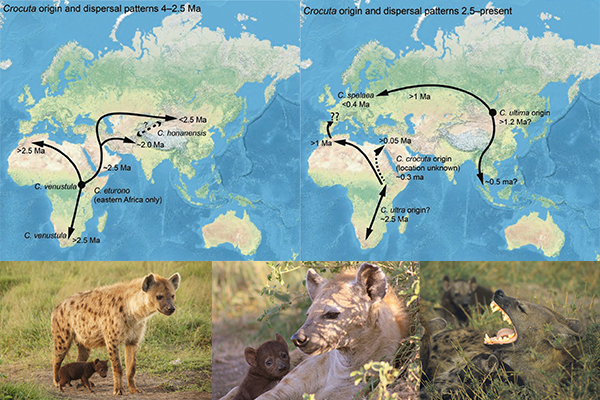
The spotted hyena, though vilified throughout most of history, is highly intelligent and one of the most social of all mammals. It belongs to the genus Crocuta, together with a debatable number of extinct species. This extensive study describes new fossils of Crocuta and reviews its known fossil record, concluding that there are at least seven extinct species of spotted hyena, including the well-known European cave hyena. The genus Crocuta appeared in Africa around 4 mya (million years ago) and dispersed to Asia by mya 2.2 and Europe by 0.9 mya. At their peak, spotted hyenas roamed across most of the Old World, from south Africa to eastern Siberia.
Lewis, M.E. & Werdelin, L. 2022. A revision of the genus Crocuta (Mammalia, Hyaenidae). Palaeontographica Abt. A 322(1-4): 1-115. https://10.1127/pala/2022/0120
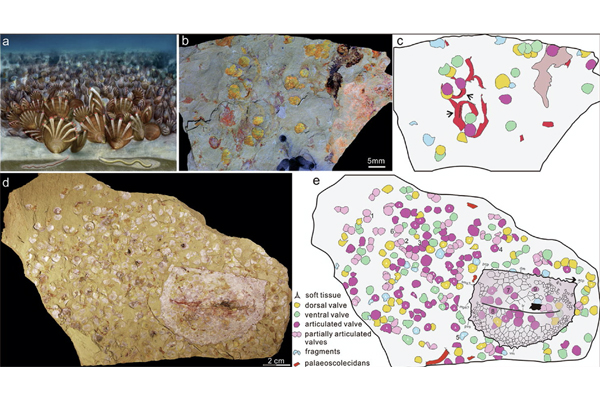
The Cambrian radiation is characterized by the emergence of diverse bilaterian animal phyla and the establishment of complex marine ecosystems. The Guanshan Biota records an unusual ecological transition from trilobite- to brachiopod-dominated communities during the early Cambrian. This community transition is accompanied by direct evidence of in situ biological interactions such as durophagous predation and kleptoparasitism. Here we describe new material from the Guanshan biota, focusing on an association of palaeoscolecidomorphs and brachiopods with parasitic tube worms that occur on micro-bedding planes. This study reveals that ecosystems during the early Cambrian exhibited a well-developed system of tiering and a complex trophic network, easily distinguished from the simple communities typical of precursor deposits in the Ediacaran.
Chen, F., Topper, T.P., Skovsted, C.B., Strotz, L.C., Shen, J. and Zhang, Z., 2022. Cambrian ecological complexities: perspectives from the earliest brachiopod-supported benthic communities in the early Cambrian Guanshan Lagerstätte. Gondwana Research 107: 30-41. https://doi.org/10.1016/j.gr.2022.02.008
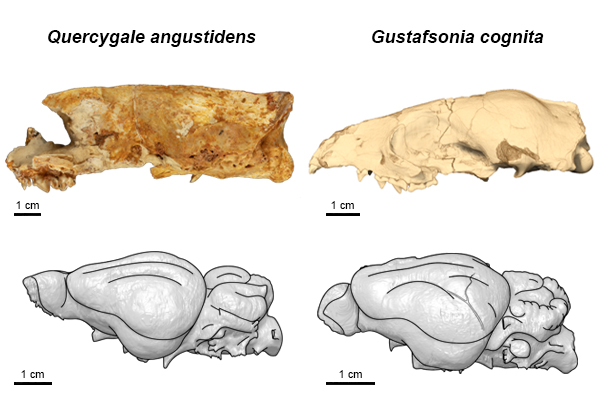
The order Carnivora includes all living placental carnivores. In this study we use computed microtomography to examine 36–39 million year old fossil crania of a close relative of Carnivora, as well as a contemporary carnivoran, to see what changes occurred in the shape of the brain around the origin of the order. Our results suggest that the folding of the cerebral cortex remained relatively simple in close relatives of the group, whereas a marked increase in complexity occurred in early carnivorans. This increase in complexity resulted in distinctive folding patterns in many of the different families. Little is known about the brain in other relatives and early members of Carnivora and examining more species would be of great interest. Nevertheless, both fossils examined in our study reveal the shape of the brain in unusually great detail, adding to our knowledge of these rare and ancient animals.
Flink, T., and Werdelin, L. 2022. Digital endocasts from two late Eocene carnivores shed light on the evolution of the brain at the origin of Carnivora. Papers in Palaeontology 8:e1422. https://doi.org/10.1002/spp2.1422
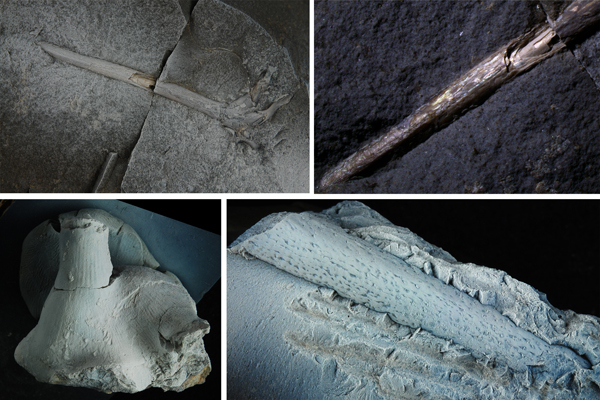
The Cenozoic deep-water strata of western Washington State, USA, have provided important insights into the evolution of the deep-sea fauna. Here report the first fossil octocorals from this area, including the first-ever fossil record of the calcaxonian family Chrysogorgiidae. Further taxa include the calcitic stems of bamboo corals and sea feathers.
Goedert, J.L., Guthrie, L.S., and Kiel, S., 2022. Octocorals (Alcyonacea and Pennatulacea) from Paleogene deep-water strata in western Washington State, USA. Journal of Paleontology. 10.1017/jpa.2022.5
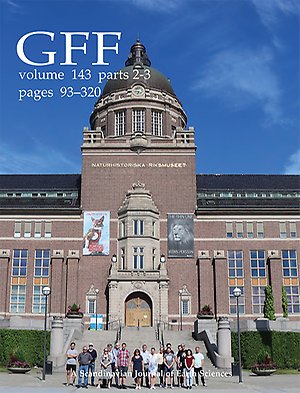
A special issue of the scientific journal GFF was published in 2021 by the researchers at the Palaeobiology department to highlight the museum's palaeontological collections and their significance. The special issue spans 500 million years of life's evolution on Earth and incudes studies of fossil animals, plants, micro organisms and the traces left behind in the sediment.
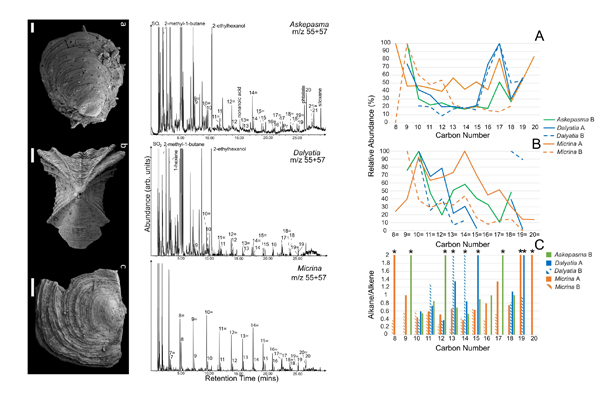
Mineralized shells of different animals contain an internal framework of organic macromolecules that can be preserved in fossils and laser micropyrolysis gas chromatography-mass spectrometry can obtain chemical information about this organic matter. In an attempt to evaluate the significance of organic molecules for palaeontology, we tested a brachiopod (Askepasma) and two tommotiids (Micrina and Dailyatia; extinct animals that are related to brachiopods) from the Cambrian of Australia. Hydrocarbons were detected in all fossils showing that molecules can survive in fossil shells for more than 500 million years. The brachiopod Askepasma is more chemically complex than the tommotiids, but is most similar to one of them, Micrina. This confirms relationships based on morphological similarity and suggest that this technique can be useful to elucidate biogeochemical relationships among fossil organisms.
Teece, B., Brock, G.A., Paterson, J.R., Skovsted, C.B., Holmer, L.E. & George, S.E. 2021. Using laser micropyrolysis to assess potential relationships between tommotiids and organophosphatic brachiopods during the “Cambrian Explosion. Journal of Analytical and Applied Pyrolysis 158, 105277. https://doi.org/10.1016/j.jaap.2021.105277
.jpg)
The end-Permian mass extinction (252 million years ago) was the largest extinction event in Earth’s history. It was triggered by rapid planetary warming parallel to current climate change trends, and led to the extinction of up to 80% of animal species. Our recent research showed that, in the wake of this devastation, bacteria and algae underwent a population explosion in the lakes and rivers. Fed by soil nutrients from the newly deforested landscapes, and promoted by the extreme CO2 and temperatures, these microbes proliferated for over 300,000 years. The microbe concentrations were, at times, so high that the water became toxic, preventing the recovery of freshwater animals.
Today, temperature, CO2 and nutrient influx (from agriculture & deforestation) are all on the rise. By looking to the fossil record, we can learn from the past and prevent such toxic blooms by keeping our rivers and lakes clean, and reducing our greenhouse gas emissions.
Mays, C., McLoughlin, S., Frank, T.D., Fielding, C.R., Slater, S.M., Vajda, V., 2021. Lethal microbial blooms delayed freshwater ecosystem recovery following the end-Permian extinction. Nature Communications 12, 5511. https://doi.org/10.1038/s41467-021-25711-3
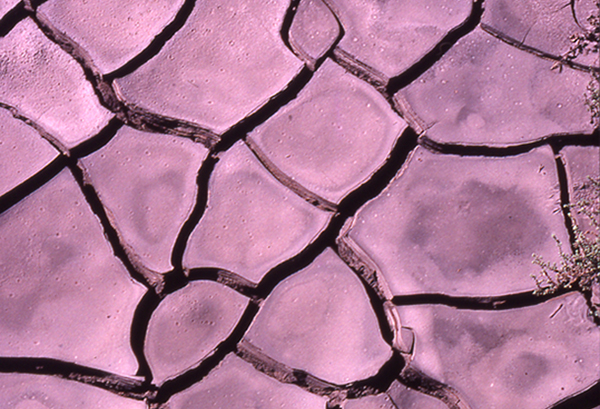
A new collaborative study by researchers at the Swedish Museum of Natural History, the University of Nebraska–Lincoln and several other institutions in the United States and Australia used geochemical records from sedimentary rocks in eastern Australia to show that the great coal-forming forests of the Permian period were destroyed during a short interval of rapid climatic warming and intense weathering of the soils 252 million years ago. The climate system became strongly seasonal flipping from intense rainfall to prolonged drought through the course of each year. The rise in temperatures matches the timing of the eruption of huge volumes of volcanic rock in Siberia that was accompanied by the release of vast quantities of greenhouse gases. The team estimated that average temperatures in high latitudes after the mass-extinction were 10–14°C warmer than before this event and this led to increased aridity and delayed the recovery of biodiversity on land. This provides salient lessons for the modern world, in which the burning of fossil fuels is beginning to increase the quantities of greenhouse gases to levels not seen on Earth for tens of millions of years.
Frank, T.D., Fielding, C.R., Winguth, A.M.E., Savatic, K., Tevyaw, A., Winguth, C., McLoughlin, S., Vajda, V., Mays, C., Nicoll, R., Bocking, M., Crowley, J.L., 2021. Pace, magnitude, and nature of terrestrial climate change through the end Permian extinction in southeastern Gondwana. Geology 49, 1089-1095. doi: 10.1130/G48795.1
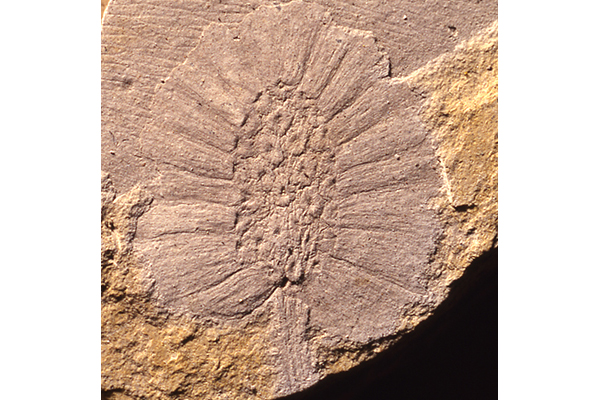
A new study reviews the recent advances in our understanding of glossopterid reproductive biology. Glossopterids were an enigmatic group of broad-leafed seed-producing plants that dominated the coal-forming vegetation of the Southern Hemisphere during the Permian (299–252 Myrs ago). The study reveals an unexpected compound architecture of glossopterid pollen cones, and a clear dominance of wind-dispersal of the pollen in this group. However, we also note that various elaborate flanges around the seed-bearing organs and the seeds themselves may relate to early experimentation with insect pollination. Glossopterids also have compound seed-bearing organs. They reveal clear adaptations for wind dispersal of the individual seeds or of the seed-bearing organs as a whole. We also highlight several mechanisms among glossopterids for regeneration as a response to damage, and that these mechanisms may have offered opportunities for vegetative reproduction in high-latitude fire-prone forests of the Permian.
McLoughlin, S. & Prevec, R., 2021. The reproductive biology of glossopterid gymnosperms—a review. Review of Palaeobotany and Palynology 295, 104527. https://doi.org/10.1016/j.revpalbo.2021.104527
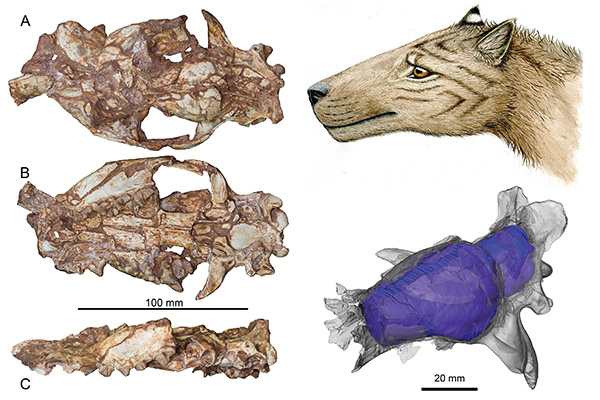
Hyaenodonts were carnivorous mammals that were once widespread, but which went extinct in the Miocene (23.5–5.2 million years ago). Since they don’t have any living descendants little is known about what their brain looked like apart from what we can glean from casts of the brain cavity of a small number of species. In this study we describe a new species of hyaenodont and use x-ray microtomography to reconstruct its braincase. We then compare the cast of this braincase with those of other hyaenodonts to better understand how the brain changed through time in these animals. In both of the major groups within Hyaenodonta we see a similar trend of an increasingly folded brain, as well as a more expanded neocortex, the part of the brain responsible for, among other things, cognition.
Flink, T., Cote, S., Rossie, J. B., Kibii, J. M. and Werdelin, L. 2021. The neurocranium of Ekweeconfractus amorui gen. et sp. nov. (Hyaenodonta, Mammalia) and the evolution of the brain in some hyaenodontan carnivores. Journal of Vertebrate Paleontology e1927748. DOI: 10.1080/02724634.2021.1927748
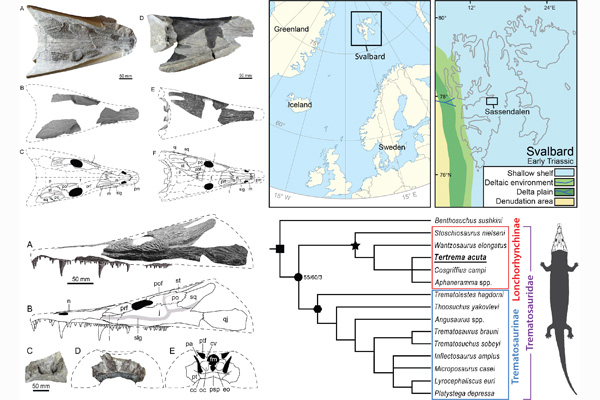
Trematosaurids were large and globally distributed Early Triassic amphibians with elongate ‘crocodile-like’ skulls. Some of the most famous fossils of this group were discovered on the island of Spitsbergen in the Arctic Svalbard archipelago by the Swedish palaeontologist Carl Wiman in the 1900s. Among these, the short-snouted trematosaurine, Tertrema acuta, is one of the few fossils represented by nearly complete remains of the skull. In our paper, we re-assessed these fossils to analyse the evolutionary relationships within the extinct trematosaurid amphibian group and provided a new taxonomic description (diagnosis) for T. acuta. Unexpectedly, our results differed markedly from previous literature-sourced interpretations which formerly placed T. acuta within the short-snouted Trematosaurinae and instead puts the species amongst the long-snouted group, lonchorhynchinae. Thus, our results challenge the long-favoured sub-division of trematosaurids based on their skull shape and suggest that the evolutionary pathways may have been more complex than the traditional classification had proposed.
Slodownik, M.A., Mörs, T. & Kear, B. 2021. Reassessment of the Early Triassic trematosaurid temnospondyl Tertrema acuta from the Arctic island of Spitsbergen. Journal of Vertebrate Paleontology, 41 (1): e1900209. https://doi.org/10.1080/02724634.2021.1900209
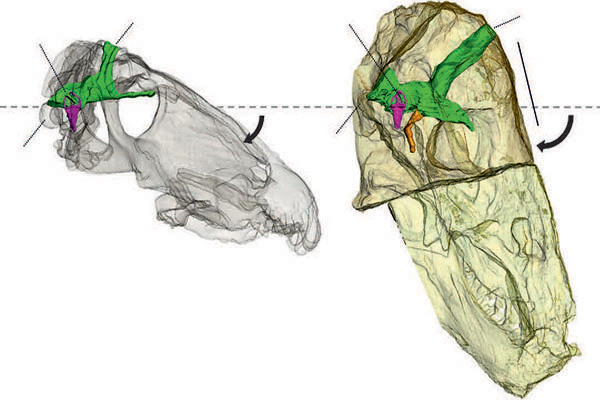
The semi-transparent skulls of Anteosaurus magnificus Watson, 1921 (A, BP/1/7074) from the middle Permian of farm Bullekraal, South Africa and Moschognathus whaitsi Broom, 1914 (B, AM4950) from the middle Permian of farm The Grant 39, South Africa, aligned on the plane of their lateral semicircular canal. The black arrow indicates the tilting of the long axis of the skull compared to the plane of the lateral semicircular canal. The dashed line represents the plane of the lateral semicircular canal. Green, endocranial cast; purple, bony labyrinth; orange, pituitary fossa. Photo: Benoit et al. 2021.
Dinocephalians (Therapsida), some of the earliest amniotes to have evolved large body size, include the carnivorous Anteosauria and mostly herbivorous Tapinocephalia. Whilst the palaeoneurology of the Tapinocephalia has been investigated in Moschognathus whaitsi, that of the Anteosauria remains completely unknown. We used X-ray micro-Computed Tomography to study, for the first time, the palaeoneurology of Anteosaurus magnificus. Compared to Moschognathus, we reconstruct Anteosaurus as an agile terrestrial predator based on the enlarged fossa for the floccular lobe of the cerebellum and semicircular canals of the inner ear. A major difference between the two genera resides in the orientation of the braincase, as indicated by the angle between the long axis of the skull and the plane of the lateral semicircular canal. This angle is 25° in Anteosaurus, whereas it is 65° in Moschognathus, which suggests that the braincase of the latter was remodelled as an adaptation to head-butting.
Benoit, J., Kruger, A., Jirah, S., Fernandez, V., & Rubidge, B. S. 2021. Palaeoneurology and palaeobiology of the dinocephalian therapsid Anteosaurus magnificus. Acta Palaeontologica Polonica, 11. https://doi.org/10.4202/app.00800.2020
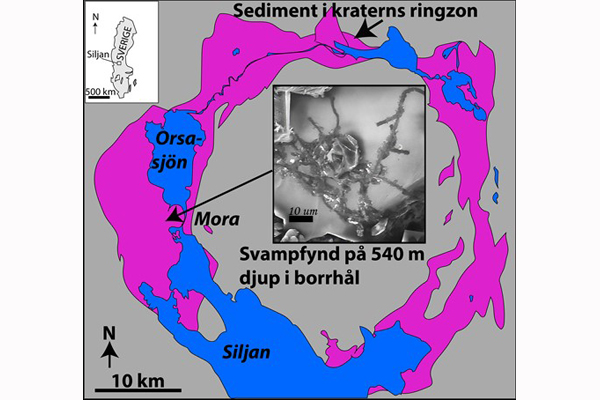
A fossil microbial consortium composed of anaerobic fungi and methanogens is described in drill cores of 540 meters depths, and an age of 39 Ma, from the Siljan impact crater. The microbes existed at strict anoxic conditions deep in the bedrock where they produced methane. The anaerobic fungi decomposed oil that are migrating in the crater´s fracture system, and in the process, H2 was produced, which the H2-dependent methanogens used to produce the greenhouse gas methane. Our study show that the crater was inhabited still 300 million years after the actual impact, and probably still is.
Drake, H., Ivarsson, M., Heim, C., Snoeyenbos-West, O., Bengtson, S., Belivanova, V., Whitehouse, M. 2021. Fossilized anaerobic and possibly methanogenesis-fueling fungi identified deep within the Siljan impact structure. Communications Earth & Environment, DOI: 10.1038/s43247-021-00107-9
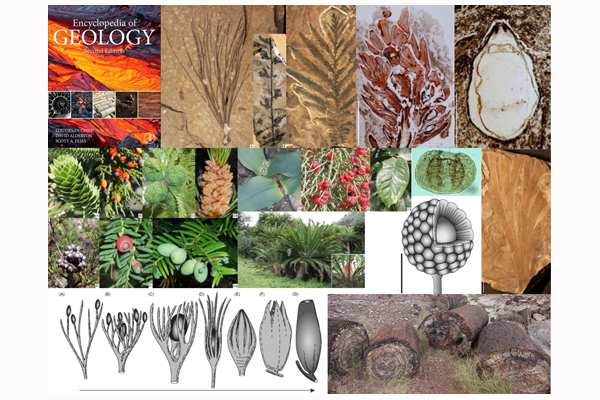
This article summarizes the diversity of living and extinct gymnosperms or “naked seed-bearing” plants. It provides an introduction to the classification of gymnosperms, their origin and early radiation, and the evolution of key diagnostic characters, such as seeds and pollen. The major orders of gymnosperms are summarized and illustrated in terms of their foliar, wood and reproductive characteristics and their stratigraphic and geographic distribution. The controversy over the relationships between the various gymnosperm orders is outlined in a series of simplified phylogenetic trees. The appearance of key characters is plotted on a chart showing the ranges of the major groups through the geological record. Finally, the economic significance of gymnosperms is outlined—from their importance as timber and paper pulp resources to applications in medicine, foodstuffs and flavourings, and to uses within industry as varnishes, cosmetics, gums, and perfume. The role of gymnosperms as allergens and toxins in the environment is also noted. This is a contribution to the book Encyclopedia of Geology, 2nd Edition.
McLoughlin, S., 2021. History of Life: Plants: Gymnosperms. In: Elias, S. & Alderton, D. (eds), Encyclopedia of Geology, 2nd Edition. Elsevier, Amsterdam, 476–500. https://doi.org/10.1016/B978-0-08-102908-4.00068-0
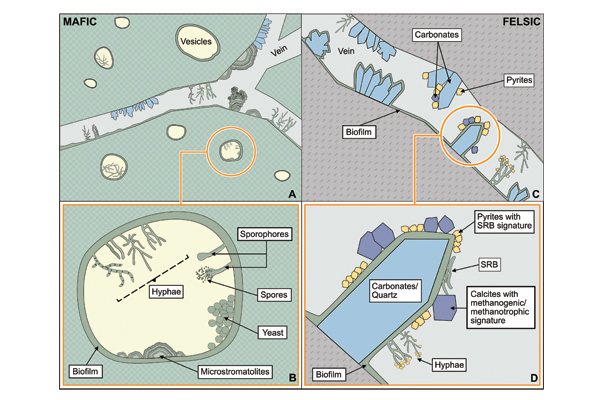
Paleontology is based on fossils found in sedimentary rocks. Research at the Swedish Museum of Natural History has during the last decade shown that fossils also are found in igneous rock. Such fossils are the fossil record of the deep biosphere. The deep biosphere is today the second largest reservoir of live biomass and prior to plants colonized land the deep biosphere was the largest reservoir of live biomass. This suggests that the deep biosphere played an unrecognized role in the evolution of prokaryotes and eukaryotes. Here, we review the current knowledge of the fossil record of igneous rock, and show that this area of research needs more attention and research in the future for us to fully understand the early development of life.
Ivarsson, M., Drake, H., Neubeck, A., Sallstedt, T., Bengtson, S., Roberts, N.M.W & Rasmussen, B. 2020. The fossil record of igneous rock. Earth Science Reviews, 210, 103342 .
.
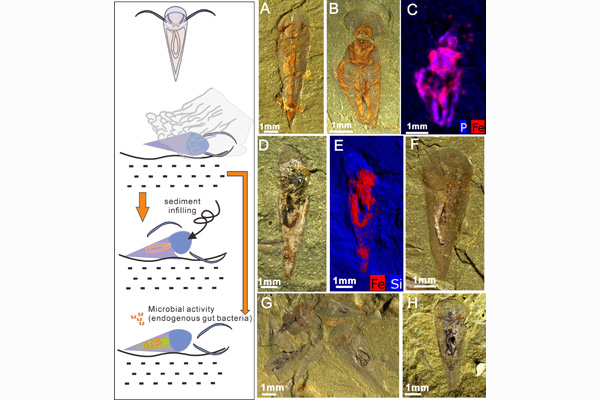
Remarkably preserved hyolithids with helens and interior soft tissues are reported from the Guanshan Biota (Cambrian, Stage 4) of Shijiangjun section, in Yunnan Province of South China. Extraordinary soft parts preserved in these hyolithids include muscle scars and digestive tracts. Three types of soft part preservation modes are described from the collection: (1) preservation through pyritization, (2) sediment-infilling of guts, and (3) bacterial biofilm pseudomorphs, resulting from endogenous bacterial decay. By comparison with younger hyolithid specimens, the newly collected materials indicate that the gut anatomy of hyolithids was evolutionarily conservative from the early Cambrian through to at least the Ordovician.
Liu, F., Skovsted, C.B., Topper, T.P., & Zhang, Z.-F., 2021. Soft part preservation in hyolithids from the lower Cambrian (Stage 4) Guanshan Biota of South China and its implications. Palaeogeography, Palaeoclimatology, Palaeoecology. https://doi.org/10.1016/j.palaeo.2020.110079
.jpg)
From the south polar forests of the mid-Cretaceous (95 million years ago) to the subtropical seas of the Pliocene (4 million years ago), the fossils of the windswept Chatham Islands reveal vivid panoramas of our changing world, and the plants and animals that have inhabited it. The history of fossil exploration on the islands is presented, from the first scientific expeditions of the mid-1800’s to the cutting-edge and profound scientific discoveries of the present. Finally, the book provides an up-to-date overview of the conservation efforts to save some of the world’s rarest animals and plants on this remote volcanic archipelago.
Stilwell, J.D., Mays, C., 2020. Lost World of Rēkohu: Ancient ‘Zealandian’ Animals and Plants of the Remote Chatham Islands. Cambridge Scholars Publishing, Newcastle upon Tyne, 293 pp.
%20.jpg)
The Permian–Triassic was an interval of nearly 100 million years (299–201 Ma), and included five global mass extinction events, including the largest of all time: the end-Permian event (252.2 Ma). We outline the abundance and distribution changes that these extinction events had on freshwater algae. We identified a distinct province of freshwater algae that stretched across much of Gondwana for most of the Permian, but came to an end at the end-Permian event, along with collapse of the wetland forest biome. Finally, we lay the groundwork for interpreting specific environmental changes from algal abundances, particularly during extinction events.
Mays, C., Vajda, V., McLoughlin, S., 2021. Permian–Triassic non-marine algae of Gondwana—distributions, natural affinities and ecological implications. Earth-Science Reviews. 29 pp. doi: 10.1016/j.earscirev.2020.103382
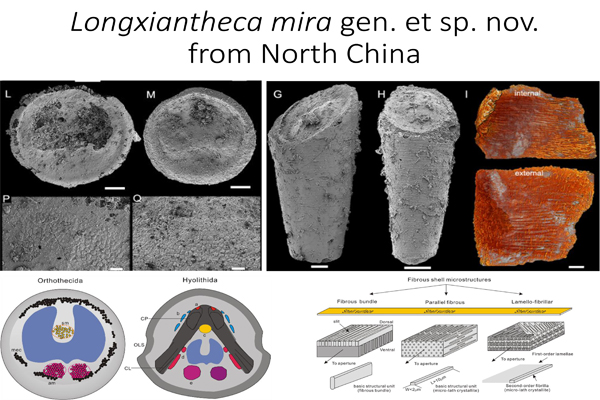
We describe a new orthothecid hyolith from the early Cambrian of North China (ca 515 million years ago). The new species, Longxiantheca mira, represent one of the most primitive orthothecids known and has a straight cone-shaped shell and a simple disc-like operculum. However, the new specimens preserve imprints of the soft anatomy of the animal and the microscopic structure of the shell. The new finds show that all hyoliths are closely comparable in their soft body anatomy and that the shell of the earliest hyoliths is closely comparable with that of early molluscs, indicating that the groups are closely related.
Li, L., Skovsted, C.B., Yun, H., Betts, M.J. & Zhang, X. 2020. New insight into the soft anatomy and shell microstructures of early Cambrian orthothecids (Hyolitha). Proceedings of the Royal Society B 287: 20201467


